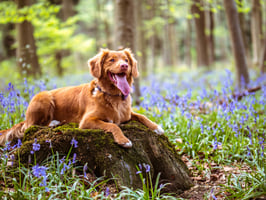Training a French Spaniel can be a rewarding experience, but it requires patience, dedication, and...
Eurasier Training: A Comprehensive Guide
Training a Eurasier is a rewarding experience. With the right techniques and dedication, owners can cultivate a strong bond with their dog, while also teaching them appropriate behaviour. This guide will provide an overview of the most popular methods for Eurasier training, from basic commands to socialisation and beyond.
Getting Started with Eurasier Training
Before you begin Eurasier training, it's important to set realistic goals and expectations. Eurasiers are intelligent dogs, but they need consistency, structure, and patience from their owners. Start by establishing a routine for your dog, and stick to it. This includes regular exercise, playtime, and potty breaks.
It is also important to understand your dog's individual personality and temperament. Some Eurasiers are more independent and require more guidance, while others are more obedient and require less direction. Knowing your dog's individual nature will help you tailor the training process.
Basic Commands and Commands with Hand Signals
One of the most important aspects of Eurasier training is teaching basic commands. This includes commands such as sit, stay, come, and down. It is best to start with simple commands and build up from there. It is also important to use positive reinforcement such as treats and verbal praise when your dog successfully completes a command.
In addition to verbal commands, many owners also use hand signals to reinforce their commands. Hand signals can be used to indicate the command you want your dog to execute, as well as to signal when the command has been completed. Using hand signals can help make commands more consistent and easier for your dog to understand.
Socialisation and Obedience Training
Socialisation is an important part of Eurasier training. Socialisation helps your dog become accustomed to different people, animals, and environments. This helps prevent fear and aggression, and encourages good behaviour. When socialising your dog, it is important to start young and expose them to a variety of experiences in a positive way.
Obedience training is also an important part of Eurasier training. Obedience training includes teaching your dog to follow commands, remain calm in different situations, and respond appropriately to stimuli. Obedience training can help your dog become more reliable and obedient, and can help prevent unwanted behaviours.
Potty Training
Potty training is a critical part of Eurasier training. Potty training should start as soon as possible, and should be done in a consistent and positive way. Start by creating a designated potty area and taking your dog there regularly. Be sure to reward good behaviour with treats and praise. It is also important to be consistent with your dog and to never punish them for accidents.
Leash Training
Leash training is an important part of Eurasier training. Leash training helps to ensure that your dog is safe and secure when out in public. Start by introducing your dog to the leash slowly and reward good behaviour. When walking your dog, be sure to keep a firm but gentle hold on the leash and give your dog an opportunity to explore.
When leash training, it is important to remain consistent and to never allow your dog to pull or become aggressive. It is also important to use a leash that is comfortable for your dog and to practice in a quiet, distraction-free area.
Training Tips and Resources
When training a Eurasier, it is important to remain patient and consistent. Positive reinforcement is key, and rewards should be given when your dog successfully completes a task. It is also important to use a variety of methods and to provide your dog with plenty of opportunities to practice. Here are some additional tips to keep in mind:
- Set realistic expectations and goals. Training your dog takes time and patience, and it is important to have realistic expectations.
- Be consistent. Consistency is key when it comes to training a Eurasier. Stick to the same commands, rewards, and rules.
- Break down commands into smaller steps. If a command is too complicated, break it down into smaller, more manageable steps.
- Provide plenty of praise. Positive reinforcement is key, and verbal praise or treats should be given when your dog successfully completes a task.
In addition to the tips above, there are plenty of resources available to help owners with Eurasier training. Websites such as The Eurasier Society and The American Kennel Club provide helpful tips and advice on training a Eurasier. There are also books and videos available to help owners learn more about Eurasier training.
Conclusion
Eurasier training is a rewarding process that requires patience and consistency. With the right techniques and dedication, owners can cultivate a strong bond with their dog, while also teaching them appropriate behaviour. This guide provided an overview of the most popular methods for Eurasier training, from basic commands to socialisation and beyond. Remember to set realistic goals and expectations, use positive reinforcement, and take advantage of the many resources available.



